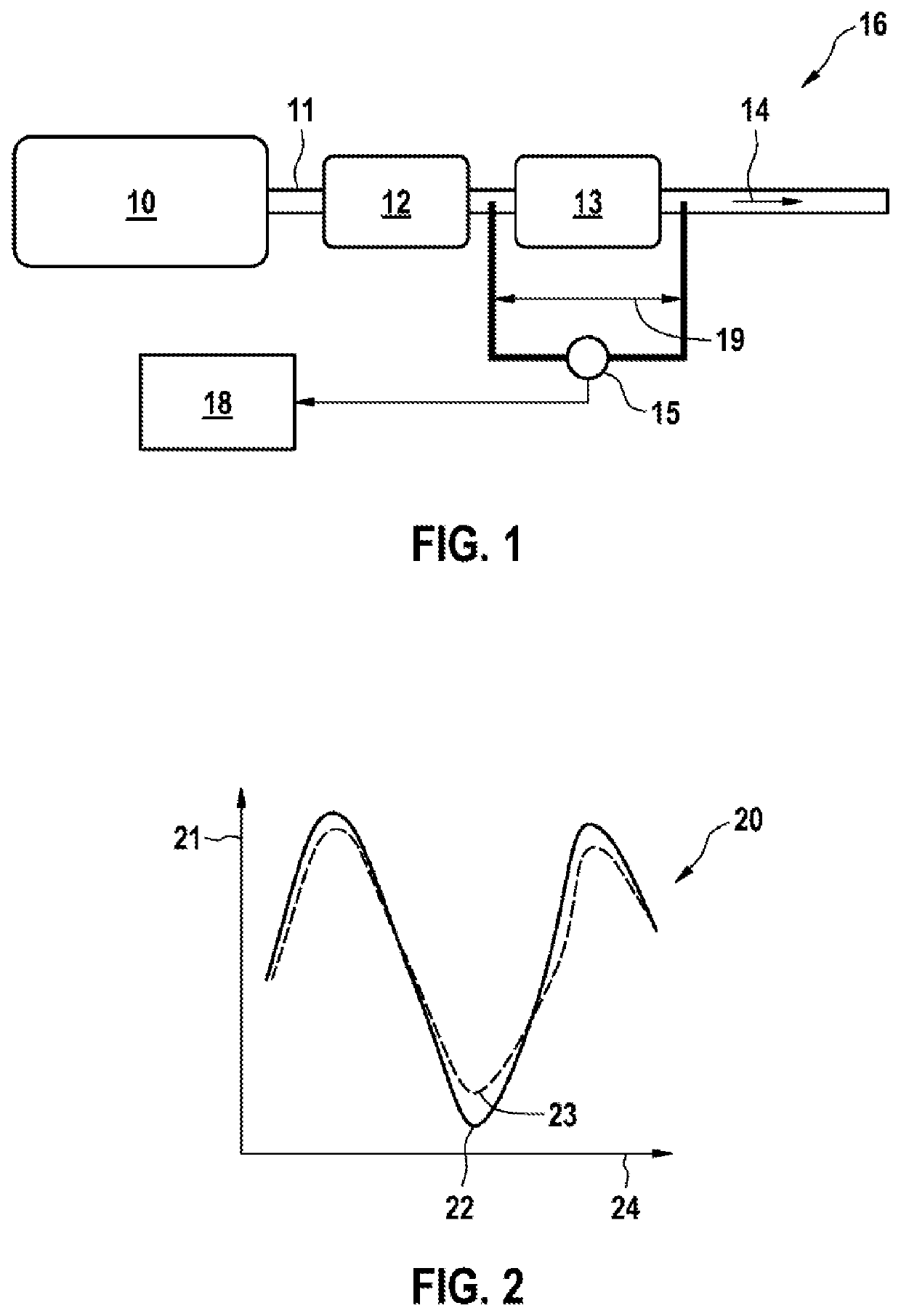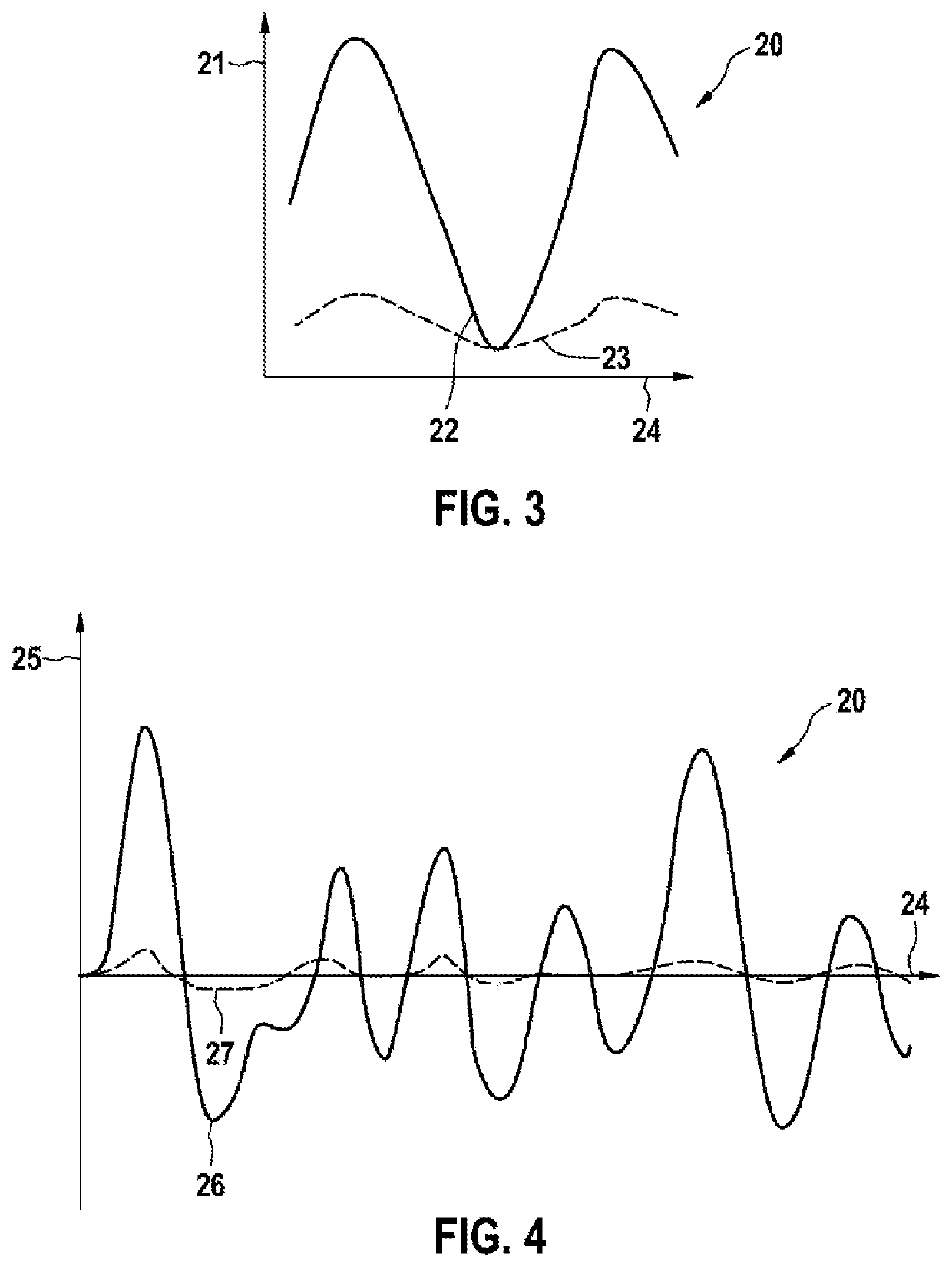Method and computer program product for diagnosing a particle filter
a particle filter and computer program technology, applied in the direction of machines/engines, exhaust treatment electric control, separation processes, etc., can solve the problems of inability to direct evaluation of the correlation between the measured differential pressure p and the expected differential pressure p*, and the low differential pressure p during such an operating mode of the internal combustion engine, so as to reduce the variability of the signal, easy to evaluate, and suppress the effect of disruption-induced signal fluctuations
- Summary
- Abstract
- Description
- Claims
- Application Information
AI Technical Summary
Benefits of technology
Problems solved by technology
Method used
Image
Examples
Embodiment Construction
[0030]FIG. 1 shows a schematic view of the technical environment in which the invention can be used. For example an internal combustion engine 10 with an exhaust gas after-treatment system 16 is illustrated. The internal combustion engine 10 is embodied as a gasoline engine. The exhaust gas of the internal combustion engine 10 is conducted away via an exhaust train 11. The exhaust gas after-treatment system 16, which is embodied in multiple stages in the exemplary embodiment shown, is arranged along the exhaust train 11. Viewed in the direction of flow of the exhaust gas (exhaust gas flow 14), firstly a catalytic converter 12 is provided, embodied here as a three-way catalytic converter. The catalytic converter 12 has a particle filter 13 connected downstream of it. In the selected basic illustration, the exhaust gas after-treatment system 16 has further components (not shown), such as exhaust gas probes and further sensors whose signals are fed to an engine controller (electronic c...
PUM
| Property | Measurement | Unit |
|---|---|---|
| differential pressure | aaaaa | aaaaa |
| differential pressure Δp* | aaaaa | aaaaa |
| flow resistance | aaaaa | aaaaa |
Abstract
Description
Claims
Application Information
 Login to View More
Login to View More - R&D
- Intellectual Property
- Life Sciences
- Materials
- Tech Scout
- Unparalleled Data Quality
- Higher Quality Content
- 60% Fewer Hallucinations
Browse by: Latest US Patents, China's latest patents, Technical Efficacy Thesaurus, Application Domain, Technology Topic, Popular Technical Reports.
© 2025 PatSnap. All rights reserved.Legal|Privacy policy|Modern Slavery Act Transparency Statement|Sitemap|About US| Contact US: help@patsnap.com


